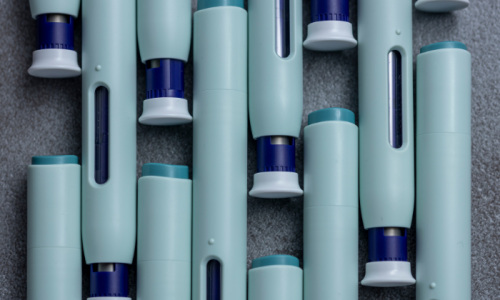- UV radiation from sunlight powerfully suppresses the immune system. An Australian MS research team has uncovered an important mechanism behind this, showing that UV light traps immune cells in the lymph nodes, preventing them from entering the bloodstream.
- UV changes the balance of chemical attractants that normally draw immune cells out of the lymph nodes and into the blood.
- In this way, UV mimics the mode of action of effective MS therapies, such as Gilenya (fingolimod), Mayzent (siponimod) and Zeposia (ozanimod) – known as the “S1P receptor modulators”.
What is already known about UV and immune suppression?
UV light is known to be a powerful suppressant of the immune system. This is perhaps best understood in the skin, where the local suppression of skin immunity by UV in sunlight increases the risk of skin cancer. The mechanisms behind immune suppression in the skin are fairly well-understood.
However, UV light not only suppresses immunity in the skin but also whole-body immunity, at sites distant from the area exposed to the UV radiation. This is likely to be important in autoimmunity because UV exposure is associated with protection from autoimmune diseases such as MS. The effect is seen at the population level in humans, where living in areas with higher UV exposure (closer to the Equator) results in a lower incidence of MS. It is also seen in laboratory models of MS, where UV exposure of the skin can delay both the onset and the severity of disease.
While suppression of whole-body immunity by UV light has been observed for many years, how this happens has been poorly understood until now. In this study, Professor Scott Byrne and his team at the University of Sydney asked whether UV exposure might be changing whole-body immunity by changing the way that immune cells circulate in the body. They focused on how T cells circulate, because T cells drive the misdirected immune response against the brain and the spinal cord in MS.
Why is immune cell circulation important in autoimmune disease?
Immune cells normally move around the body, conducting “surveillance” of body tissues. The lymph nodes are an important site where foreign substances are collected and processed, and immune responses are activated. Activated T cells can then leave the lymph node, enter the blood stream, and migrate to the area of infection (or to body tissues targeted in autoimmune diseases) to mount an immune attack on the perceived threat. So, the movement of T cells in and out of the lymph nodes is critical for both immune surveillance and activation of the immune response.
What did the researchers investigate?
The researchers asked whether UV treatment changes whole body immunity by changing the way T cells move around the body. T cell movement is stimulated by certain molecules released in the body. One of the molecules is called sphingosine-1-phosphate (S1P), and T cells have specific sensors for this molecule called S1P receptors. S1P is found in higher levels in the blood than in the lymph node, so it attracts T cells out of the lymph node and into the blood.
What did the researchers show?
In their recent publication in the prestigious Journal of Immunology, the team first looked to see whether UV radiation changed the number of T cells in different sites in the body. They found that UV treatment of the skin increased the number of T cells in the lymph nodes close to the skin, and in parallel, reduced the number of T cells in the blood.
Next, they looked to see whether there were changes in the S1P system that could explain this response to UV. First, they found that T cells in these lymph nodes had lost this receptor molecule on the cell surface. From prior work, it is known that sometimes S1P receptor levels are reduced by the cell when there is excess S1P present in the environment. So, the researchers measured the levels of S1P and found UV exposure increased S1P levels in the lymph nodes.
Finally, they asked why S1P levels were increasing in the lymph nodes. By monitoring chemical changes in the lymph node, they were able to show that UV exposure increased the activity of a protein called SphK1 that produces S1P. To confirm this was the case, the researchers blocked the SphK1 protein in the skin prior to UV exposure. This prevented S1P production and, in turn, prevented the trapping of T cells in the lymph nodes once exposed to UV light.
What did the researchers conclude?
Overall, the research showed that UV exposure increases the level of S1P in the lymph nodes with the knock-on effect of reducing the S1P receptor on T cells. This leaves T cells unable to sense that there is more S1P in the blood, which would normally help draw them out of the lymph node and into the blood. This is the same way that the class of MS therapies called S1P receptor modulators works, whereby the UV mimics the mode of action of these effective MS therapies Gilenya (fingolimod), Mayzent (siponimod) and Zeposia (ozanimod).
These drugs trap T cells in the lymph node, so they are unable to migrate via the blood to the brain and spinal cord, where they cause damage to the myelin sheath in MS. This work demonstrates the powerful effect of UV light on the immune system, and has demonstrated for the first time, the mechanism by which UV light has far-reaching effects on whole-body immune function.






